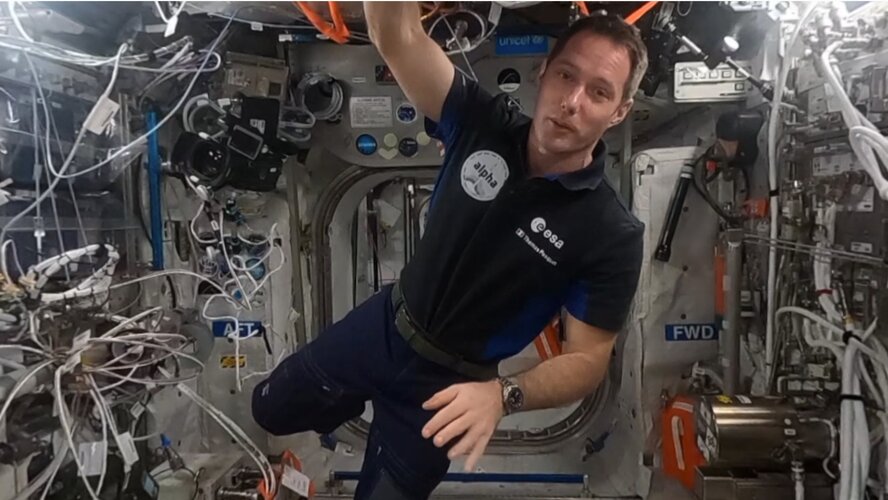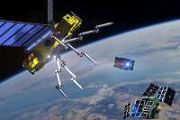
Copernical Team
US Company to Work with Skybridge West Africa on $5 Billion Smart Cities Projects in Ghana
 TPT Global Tech, Inc. has entered into a strategic technology agreement with Skybridge West Africa (SWA) to participate in the development of 20 SMART Villages emulating that of Duval County Florida in the Country of Ghana.
SWA has been awarded a $5B community development approval from the Ghanaian Ministry of Works and Housing to develop and build over 100,000 newly constructed homes util
TPT Global Tech, Inc. has entered into a strategic technology agreement with Skybridge West Africa (SWA) to participate in the development of 20 SMART Villages emulating that of Duval County Florida in the Country of Ghana.
SWA has been awarded a $5B community development approval from the Ghanaian Ministry of Works and Housing to develop and build over 100,000 newly constructed homes util China to build satellite constellation for natural disaster observation
 China has initiated a project of building a constellation of 36 low-orbit satellites to gather information for forecasting natural disasters and monitoring urban emergencies.
The project undertaken by the Tianjin Satcom Geohe Technologies Co., Ltd. was inaugurated on Tuesday in China's spacecraft launch center of Wenchang, in South China's Hainan province.
Guo Jianqiang, president of
China has initiated a project of building a constellation of 36 low-orbit satellites to gather information for forecasting natural disasters and monitoring urban emergencies.
The project undertaken by the Tianjin Satcom Geohe Technologies Co., Ltd. was inaugurated on Tuesday in China's spacecraft launch center of Wenchang, in South China's Hainan province.
Guo Jianqiang, president of Mars helicopter sees potential rover road ahead
 Ask any space explorer, and they'll have a favorite photograph or two from their mission. For Ken Farley, the project scientist for NASA's Perseverance rover, one of his current favorites is a color image of "South Seitah," an area the mission's science team had considered potentially worthy of a rover visit. The agency's Ingenuity Mars Helicopter took the image during its 12th and most recent f
Ask any space explorer, and they'll have a favorite photograph or two from their mission. For Ken Farley, the project scientist for NASA's Perseverance rover, one of his current favorites is a color image of "South Seitah," an area the mission's science team had considered potentially worthy of a rover visit. The agency's Ingenuity Mars Helicopter took the image during its 12th and most recent f Film and cultures fly on SpaceX CR23 cargo resupply mission
 Samples of the Biofilms experiment are headed to the International Space Station on the SpaceX CR23 cargo resupply mission this weekend to help maintain astronaut and material safety in space.
A common piece of advice of the past 18 months has been to make sure you wash your hands thoroughly. This is because microorganisms are easily spread across common surfaces like door handles and ligh
Samples of the Biofilms experiment are headed to the International Space Station on the SpaceX CR23 cargo resupply mission this weekend to help maintain astronaut and material safety in space.
A common piece of advice of the past 18 months has been to make sure you wash your hands thoroughly. This is because microorganisms are easily spread across common surfaces like door handles and ligh Making space-based research more affordable-with a little help from the Girl Scouts
 Using ants, plants, and even brine shrimp, a group of Girl Scouts will be among the first researchers to help test a new autonomous research platform on the International Space Station (ISS) that is helping to expand the affordability of microgravity research.
The Faraday Research Facility, developed by ISS U.S. National Laboratory Commercial Service Provider ProXopS, LLC., will launch on
Using ants, plants, and even brine shrimp, a group of Girl Scouts will be among the first researchers to help test a new autonomous research platform on the International Space Station (ISS) that is helping to expand the affordability of microgravity research.
The Faraday Research Facility, developed by ISS U.S. National Laboratory Commercial Service Provider ProXopS, LLC., will launch on StarLab Oasis opens in Abu Dhabi
 Nanoracks, the world's leading provider of commercial access to space, is pleased to announce the launch of a new Space AgTech company, StarLab Oasis. This expansion highlights Nanoracks commitment to address the growing problems of desertification, climate change, water scarcity and food security. The research on the impact of harsh space environments and arid Earth conditions on agriculture, l
Nanoracks, the world's leading provider of commercial access to space, is pleased to announce the launch of a new Space AgTech company, StarLab Oasis. This expansion highlights Nanoracks commitment to address the growing problems of desertification, climate change, water scarcity and food security. The research on the impact of harsh space environments and arid Earth conditions on agriculture, l NASA Head Nelson hopes US-Russian cooperation on ISS will continue beyond 2030
 NASA Administrator Bill Nelson has told Sputnik that he hopes cooperation between the United States and Russia on the International Space Station (ISS) will continue beyond 2030.
When asked whether he expects the ISS relationship to be extended, Nelson said: "Yes. To 2030. And Russia is our partner on the ISS".
"I'm very hopeful and very optimistic that this extraordinary relationshi
NASA Administrator Bill Nelson has told Sputnik that he hopes cooperation between the United States and Russia on the International Space Station (ISS) will continue beyond 2030.
When asked whether he expects the ISS relationship to be extended, Nelson said: "Yes. To 2030. And Russia is our partner on the ISS".
"I'm very hopeful and very optimistic that this extraordinary relationshi NASA Technologies slated for testing on Blue Origin's New Shepard
 While there won't be humans on Blue Origin's 17th New Shepard mission, the fully reusable launch vehicle will carry technologies from NASA, industry, and academia aboard. The agency's Flight Opportunities program supports six payload flight tests, which are slated for lift off no earlier than Aug. 26 from the company's Launch Site One in West Texas.
For some innovations, this is just one o
While there won't be humans on Blue Origin's 17th New Shepard mission, the fully reusable launch vehicle will carry technologies from NASA, industry, and academia aboard. The agency's Flight Opportunities program supports six payload flight tests, which are slated for lift off no earlier than Aug. 26 from the company's Launch Site One in West Texas.
For some innovations, this is just one o Space Station 360 – Columbus module (in French with English subtitles available)
 Video:
00:02:32
Video:
00:02:32
ESA astronaut Thomas Pesquet takes you on a tour of the International Space Station like no other. Filmed with a 360 camera, the Space Station 360 series lets you explore for yourself alongside Thomas’s explanation – starting with Europe’s science laboratory, Columbus.
Columbus is not the Station’s largest module, but it is one of the best equipped. It is the place where European astronauts conduct most of their work on board and has an external platform that allows experiments to be exposed to the vacuum of space. In addition to science racks, Columbus offers storage space and even
Team captures data from unarmed Minuteman III test launch

A team from Lawrence Livermore National Laboratory (LLNL) successfully collected data from the recent operational test of an Air Force Global Strike Command unarmed Minuteman III intercontinental ballistic missile (ICBM) launched from Vandenberg Space Force Base.
































